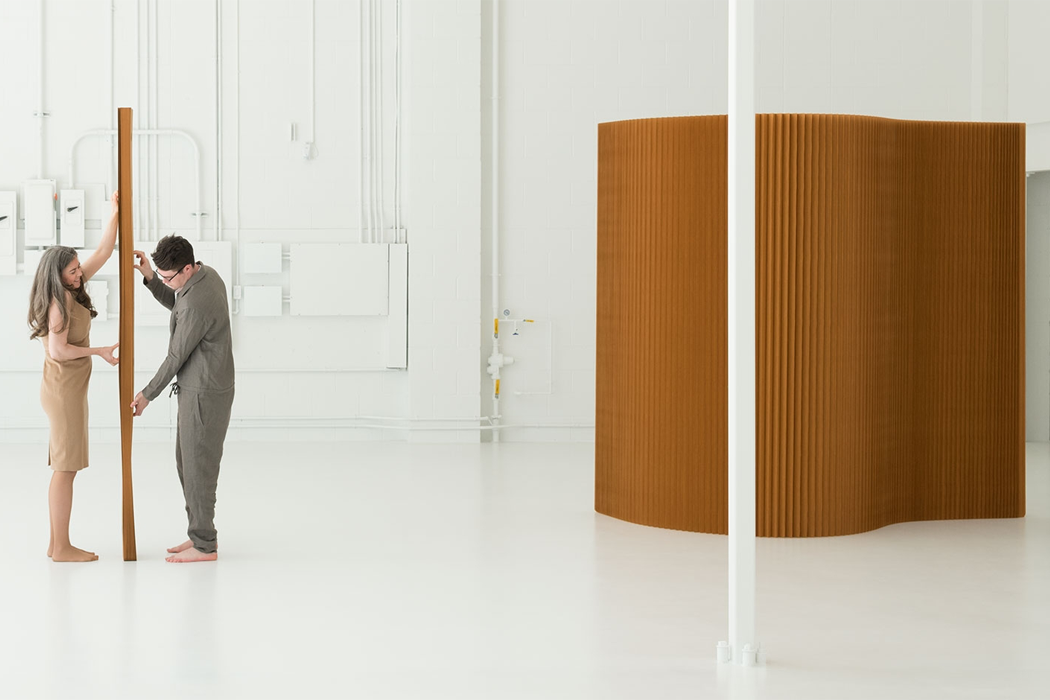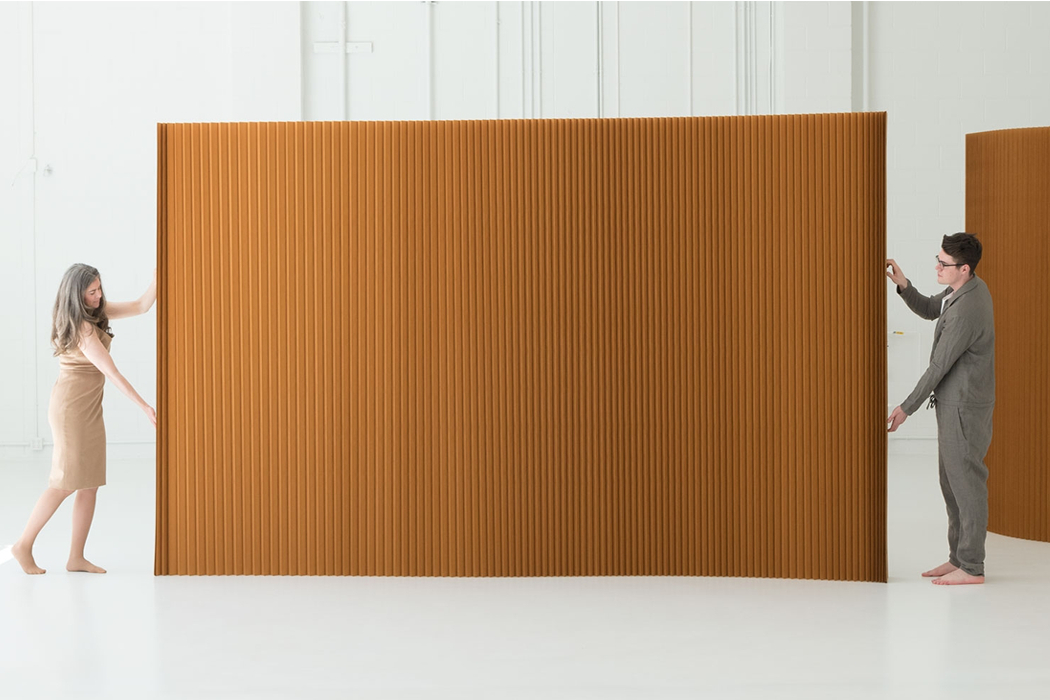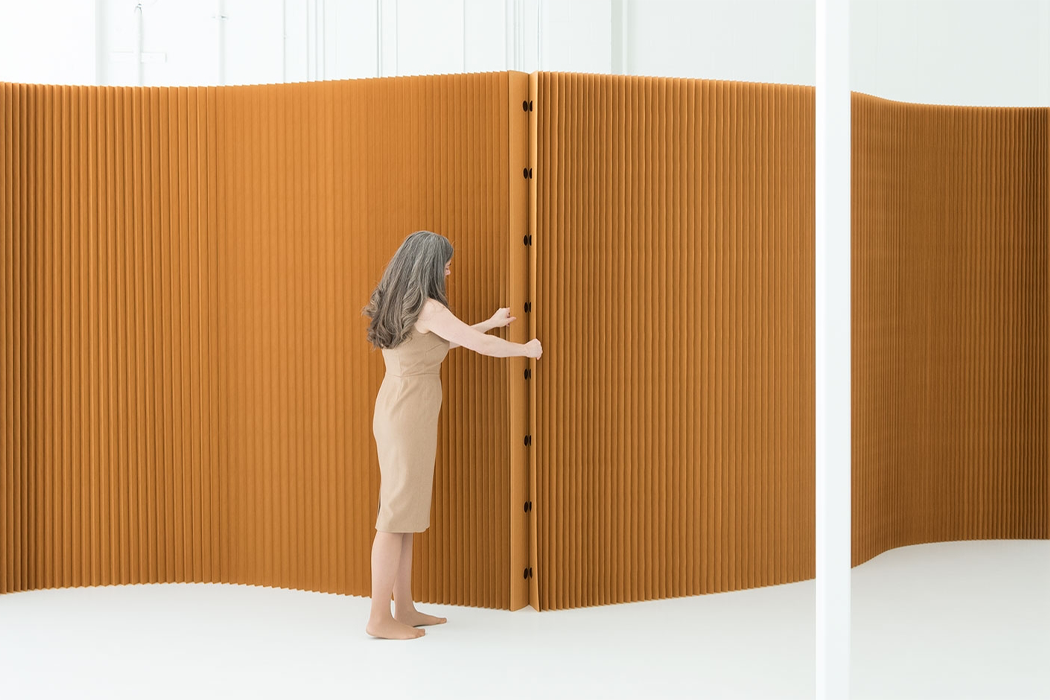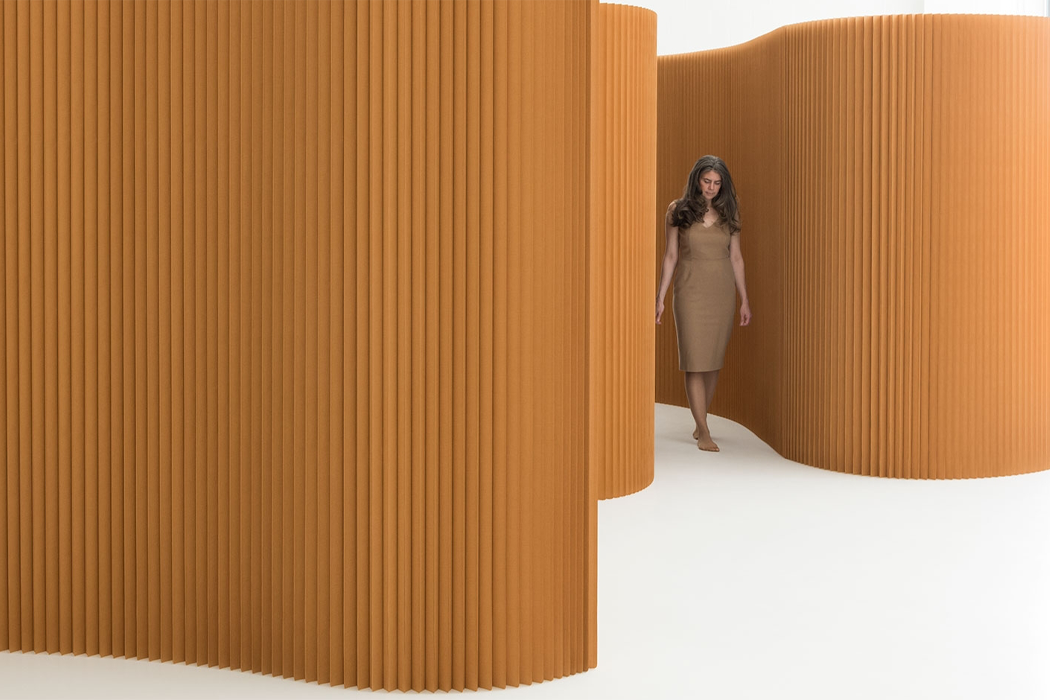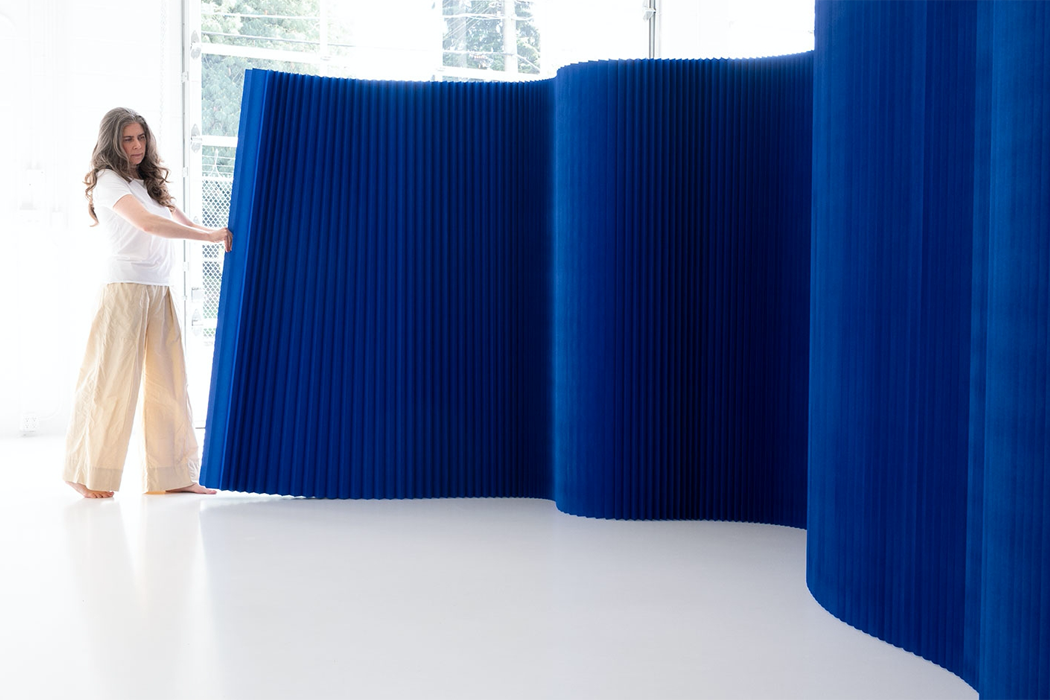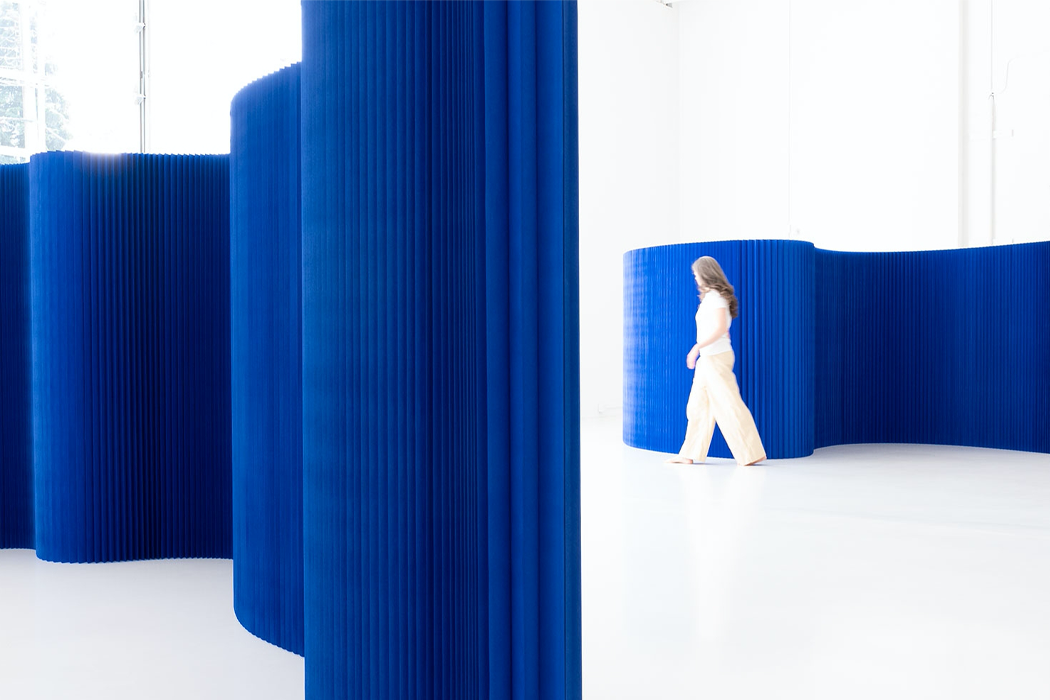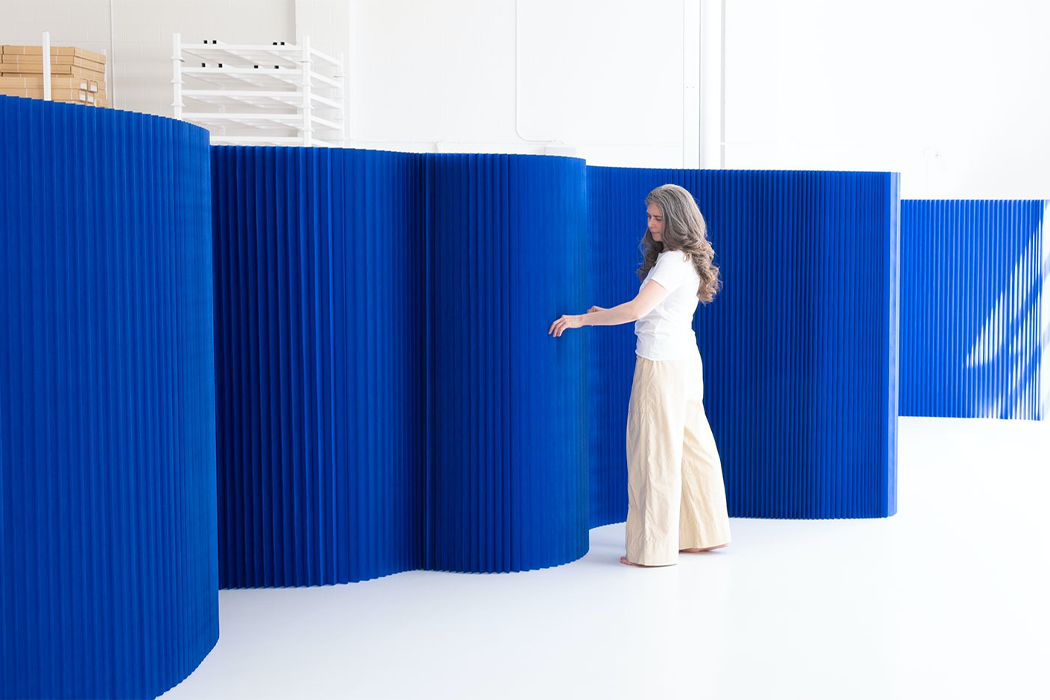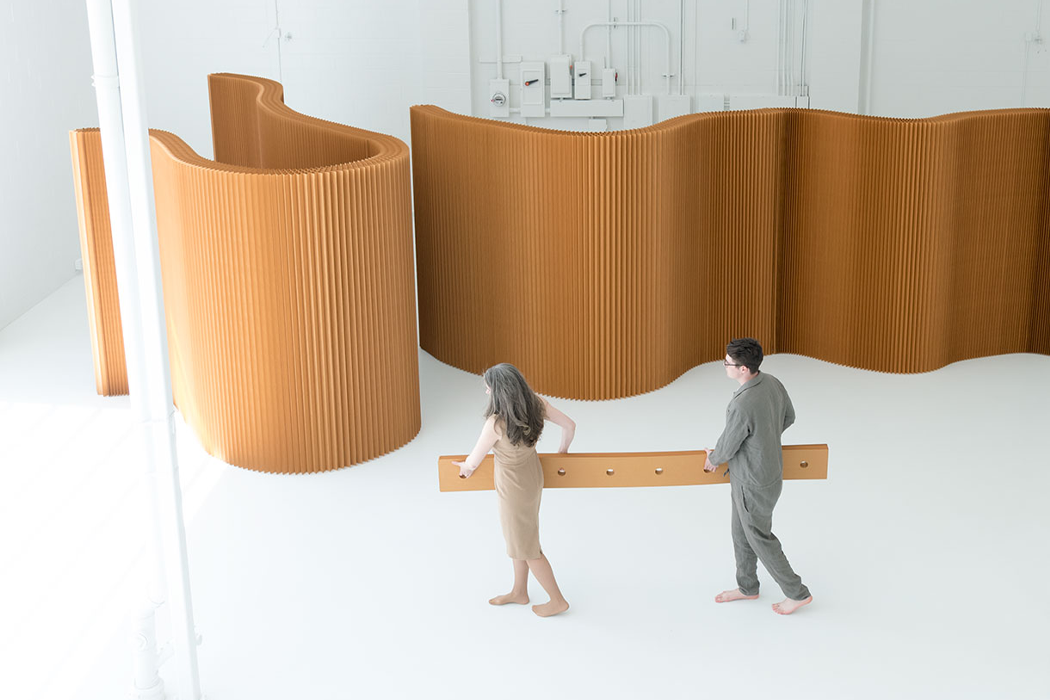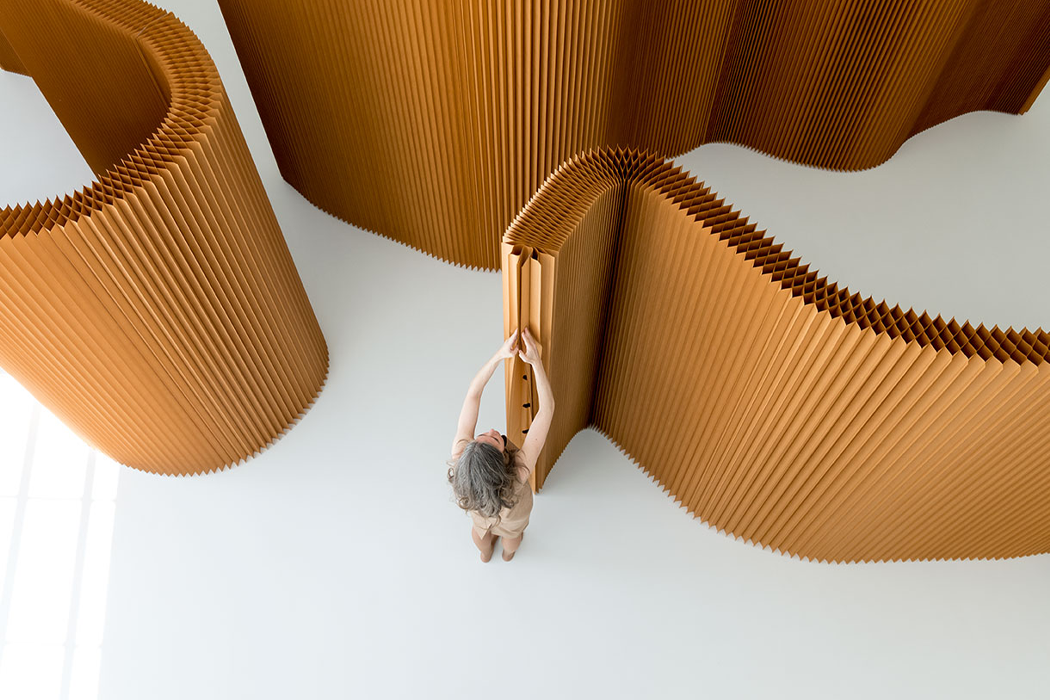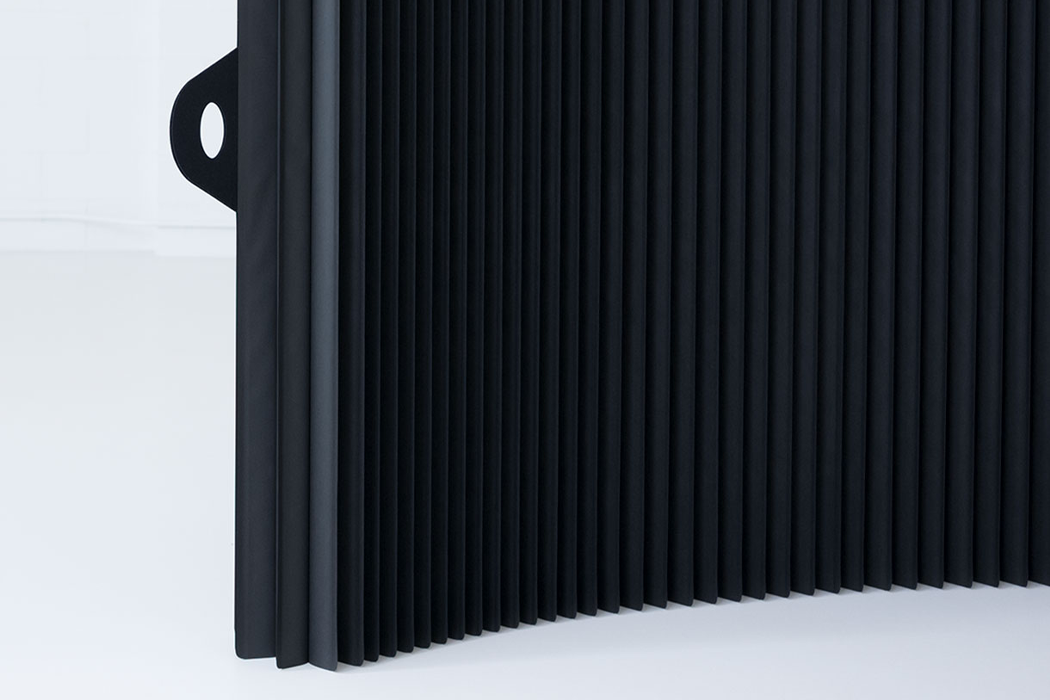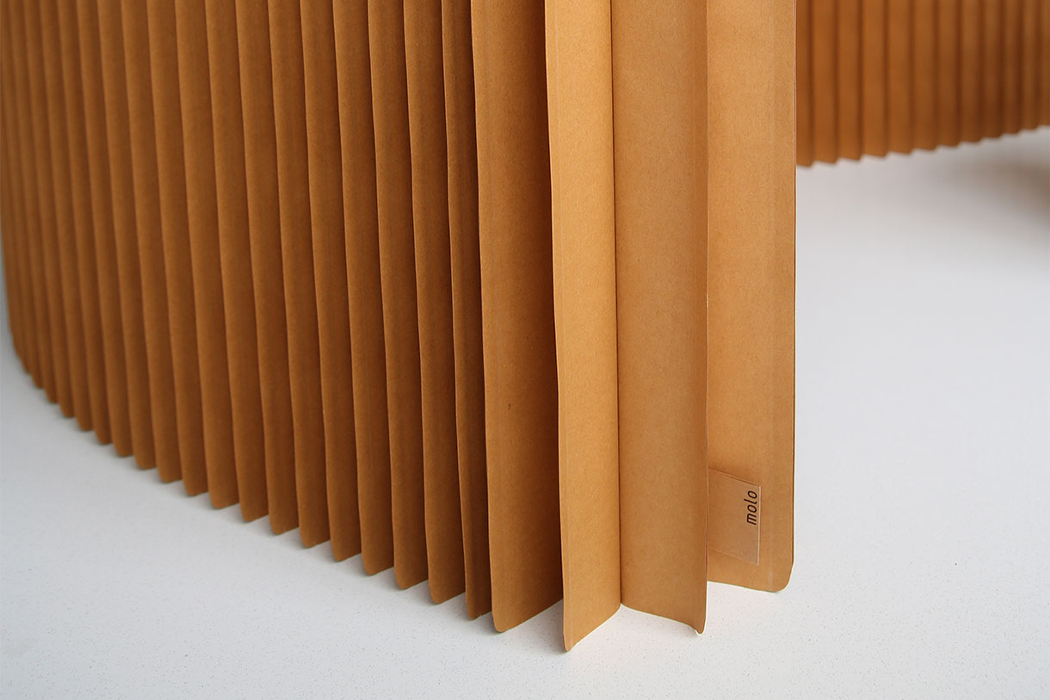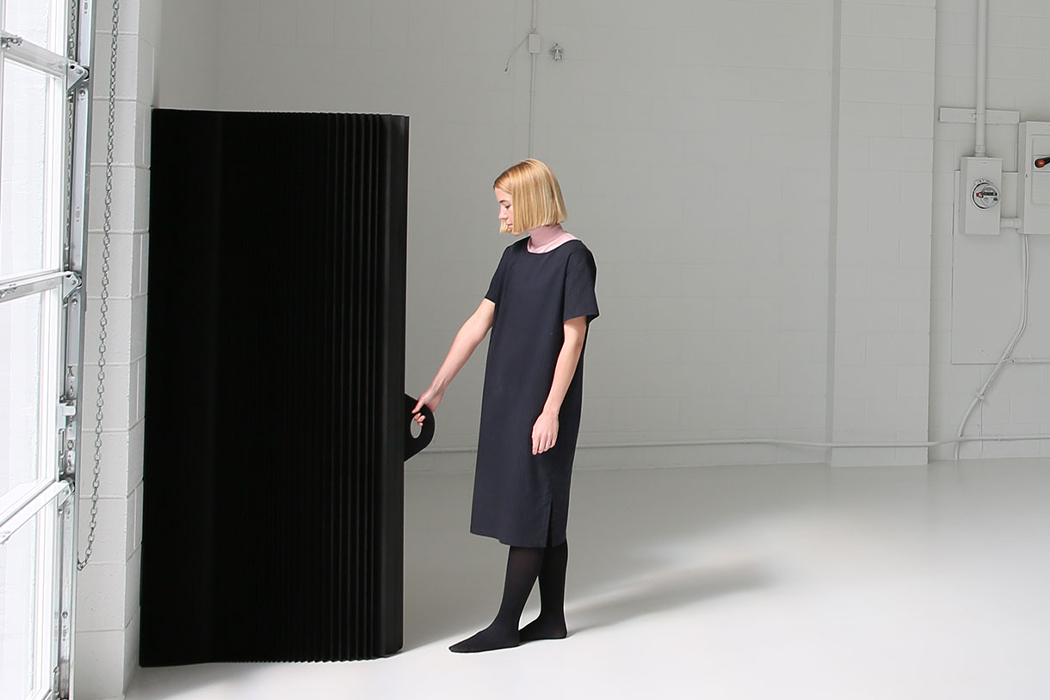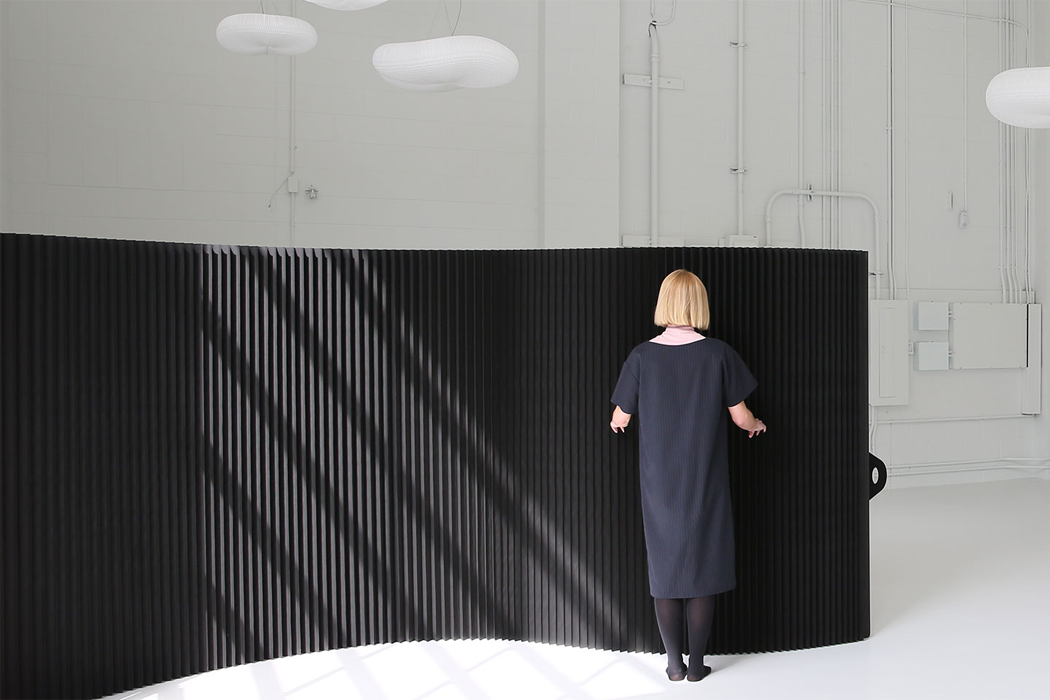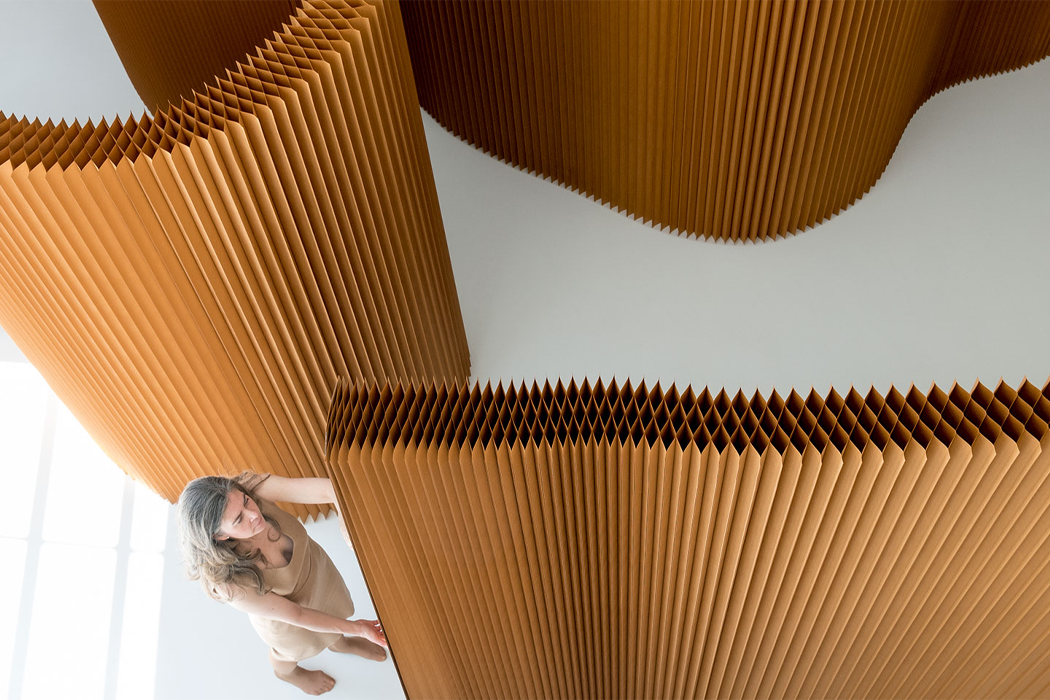
Room dividers are more than just extra walls – they’re changing rooms, and private meeting spaces, interior statement pieces, or just a means to block out some sun. There are so many ways to enjoy room dividers, yet most room dividers on the market are rigid and cold, or mass-produced and made from inefficient material. Bringing new life to the room divider, the designers at Molo, a design and production studio led by Stephanie Forsythe and Todd MacAllen, created their own rendition, calling it a paper softwall or folding partition, one that folds and bends, with the flexibility to be shaped in any curved or linear formation, and expands and contracts, like breathing.
When expanded, the paper softwall is like a monolithic accordion paper organizer that is surprisingly lightweight and can easily change direction to define private spaces or supply dramatic backdrops for performances. Each paper softwall expands to a total of 15 feet when fully extended and positioned in a straight line, but can reach any length in between for shorter, or more curved lines. When the soft paperwall is properly compressed, it recoils and achieves the thickness of a book. Molo’s paper softwall is structured in wooden layers, that are collected from responsible sources certified by the Forest Stewardship Council, and then coated with a non-toxic fire retardant. For room dividers, this is a new building material. The honeycomb latticework gives the softwall shape and flexibility to bend and create shapes, while also providing intricately layered barriers to absorb sound with a soft and distinguishable thickness.
The softwalls come in three different choices for height, five, six, or eight feet, with an additional three options for color. The ochre brown brings an earthy warmth, while the bright indigo softwalls were, “dyed to create rhythms of radiant blues and inky, dark shadows,” and the saturated black attained its darkness from bamboo charcoal ink dyes. Steel strips attach to the magnetic end of the softwall, in order to latch onto hard surfaces, like walls or fences, and then with a corresponding felt handle, Molo’s softwall can mimic a sliding door, evocative of shōji, a room divider used in traditional Japanese architecture. By fastening additional softwalls to the magnetic strips that line the ends of each partition, they can double in size, or triple even. If inspiration hits, you might even be able to create a small home constructed entirely out of Molo’s softwalls.
Designers: Stephanie Forsythe and Todd MacAllen
